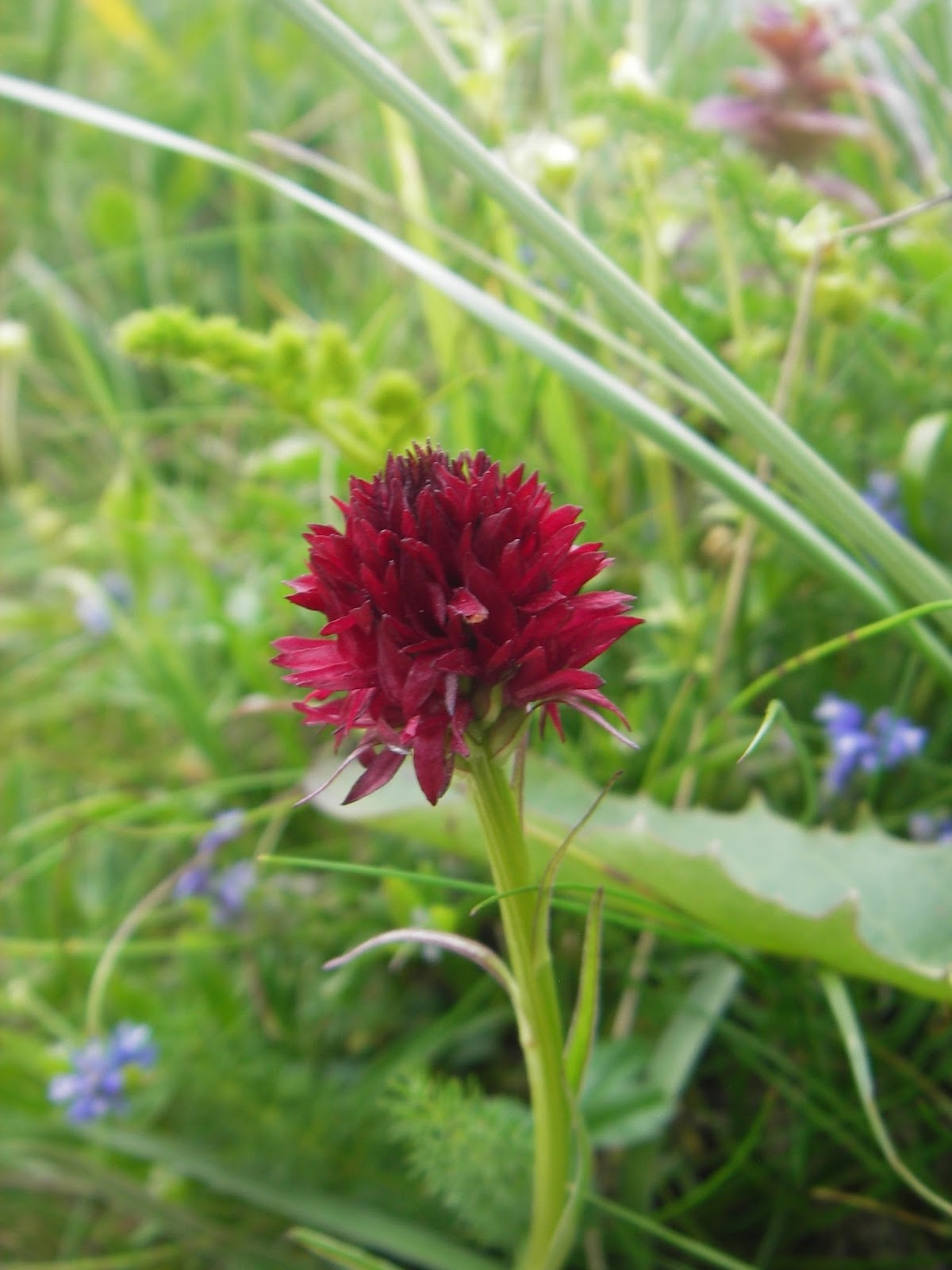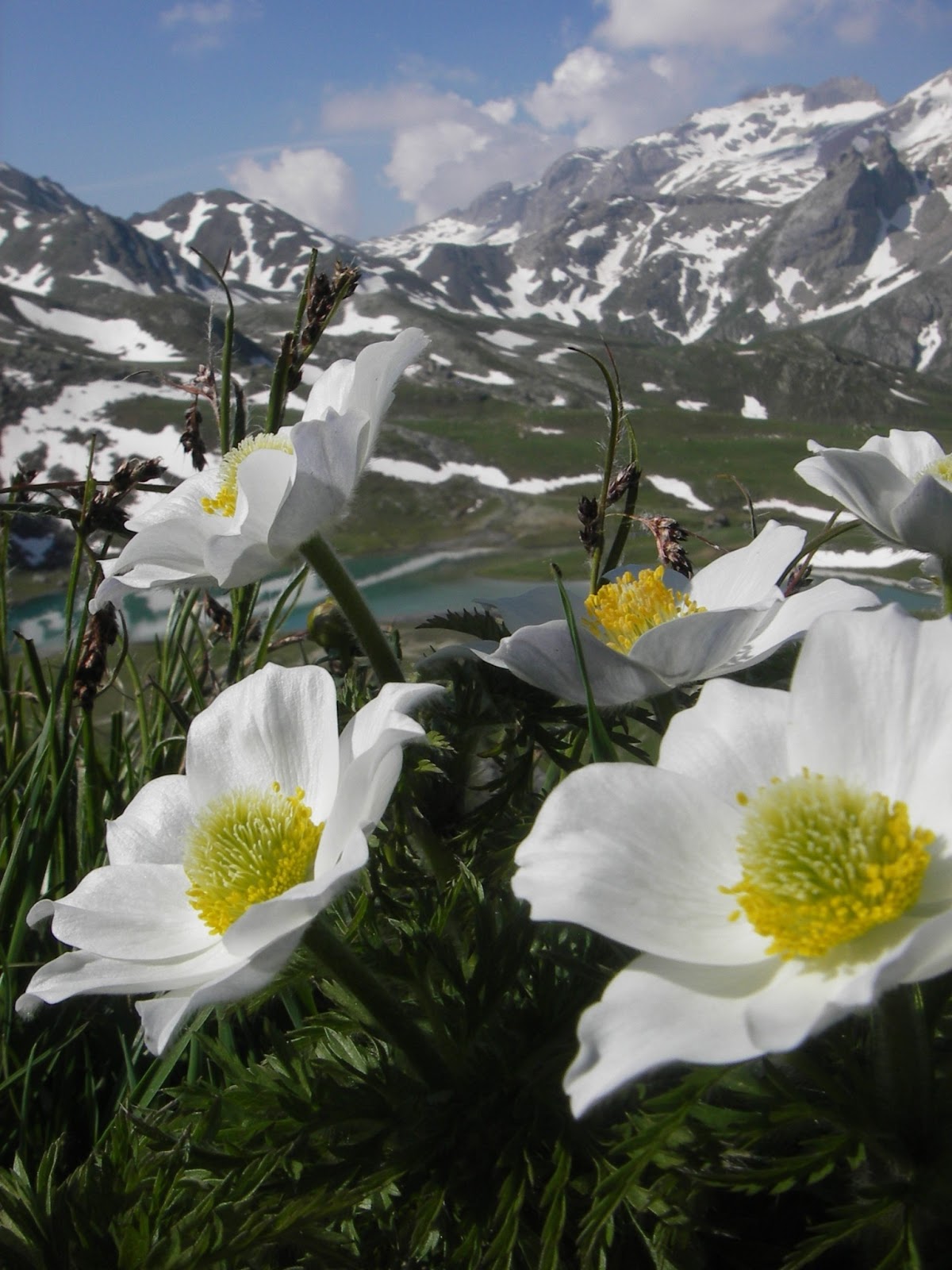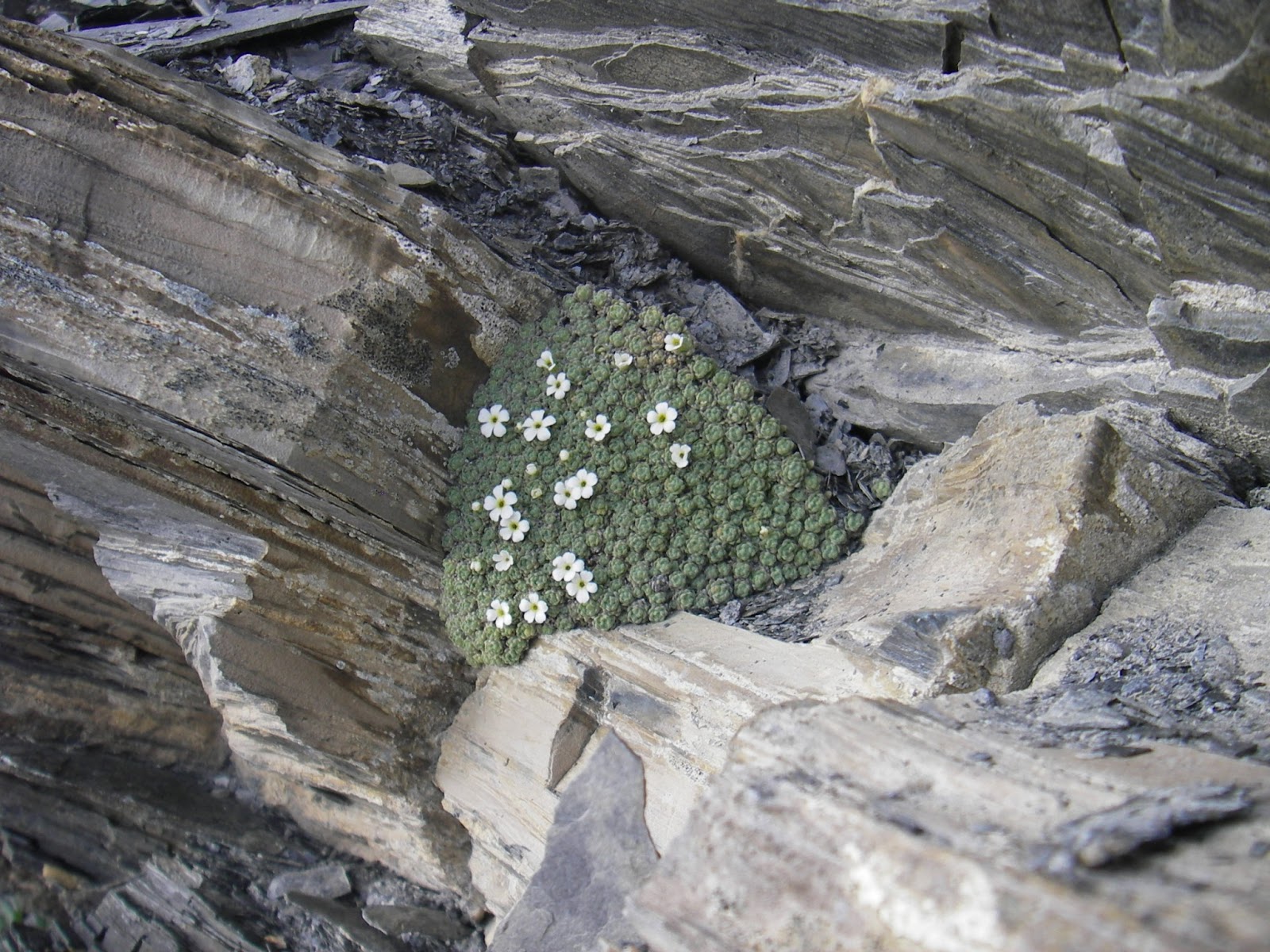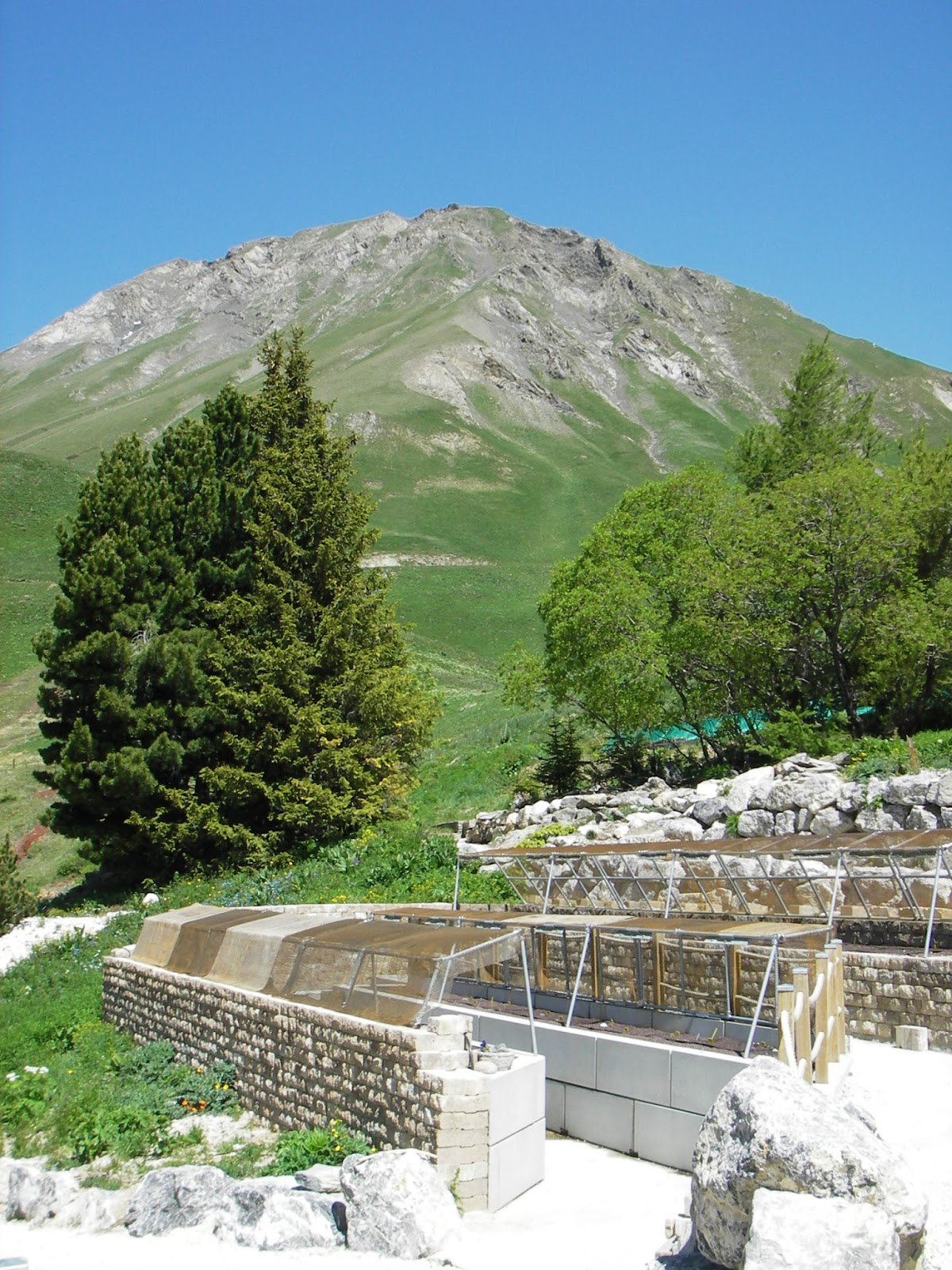Besides being full of beautiful plants, Lautaret is also full of people doing many different activities. The daily gardening crew consists of two year-round gardeners, one seasonal and between four and seven volunteers and students. The chief task is weeding. I find it interesting to see what plants are weeds in the different gardens I visit. Here some of the common weeds are:
Polemonium caerulum (Jacob's Ladder),
Achillea millefolium (Common Yarrow) and several members of the Brassicaceae, including
Arabis. The garden does not use any chemicals, so weeding is done exclusively by hand. Recently we have also been planting, topdressing and compacting the gravel paths and bringing tufa rock to the garden for a new bed.
One of the many research projects taking place focuses on
Achillea millefolium. Samples were collected from around the garden and were pressed and dried. Next they will undergo chromosomal analysis to determine if there are different species present, or if it is all
A. millefolium. The different specimens vary greatly as far as their leaf and flower color and shape.
 |
| Tools of the trade (L to R): A small hand rake to remove footprints from the bed, a screwdriver and narrow weeder which are useful for extracting weeds from cushion plants and in between rocks, a gouje (narrow trowel) is the default weeding tool. At the top is a gouje with a longer handle to provide more leverage for digging out larger weeds! |
 |
| Loading tufa rock from a pile about 15 mins drive from the garden. |
 |
| Christophe, one of the garden's botanists, labels the dried specimens of Achillea that will be used for the genetics study. |
 |
| Maeva and Heloïse planting Lewisia rediviva var. minor in the North American bed. |
 |
| Klei, a botanical illustrator from Brazil, is at the garden for a week to draw. |
 |
| On a rainy day, Kathleen uses a Dremel to inscribe plant names on metal labels. |

















































